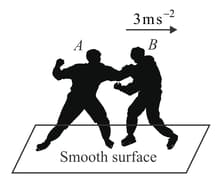As shown in figure, two identical balls strike a rigid wall with equal speeds but at different angles of incidence. They are reflected back without any loss in speed.
(a) Determine the direction of force exerted by each ball on the wall.
(b) Determine the ratio of impulse imparted by the two balls on the wall in both cases.
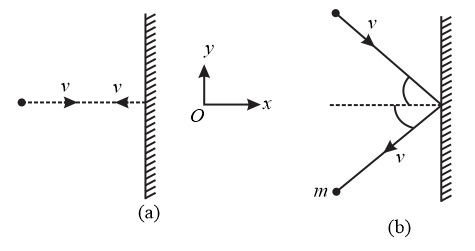


Important Questions on Newton's Laws of Motion (Without Friction)
The figure shows the position-time graph of a particle of mass . Suggest a suitable physical context for this motion. What is the time between two consecutive impulses received by the particle? What is the magnitude of each impulse?
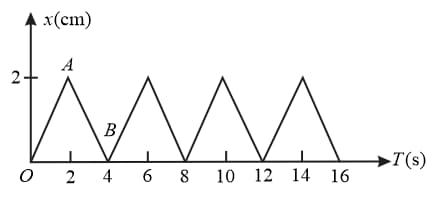
A rubber ball of mass falls from a height of and rebounds to a height of . Find the impulse and the average force between the ball and the ground if the time for which they are in contact is .
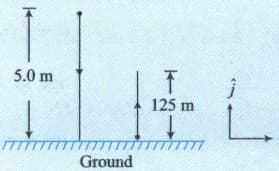
A steel ball strikes a wall with a speed of at an angle of with the surface of the wall. The ball bounces off with the same speed and at same angle as shown. If the ball was in contact with the wall for , find the average force exerted by the wall on the ball.
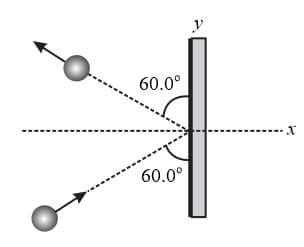
The magnitude of the net force exerted in the direction on a particle varies with time as shown in figure. Find
(a) the impulse of the force,
(b) the final velocity the particle attains if it is originally at rest,
(c) its final velocity if its original velocity is and
(d) the average force exerted on the particle for the time interval between and
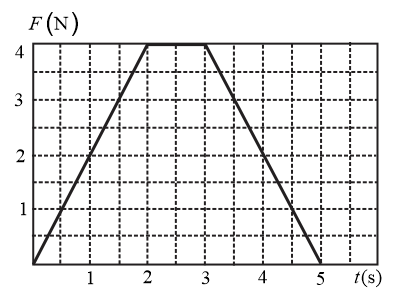
A U-shaped smooth wire has a semi-circular bending between and as shown in figure. A bead of mass moving with uniform speed through the wire enters the semicircular bend at and leaves at . Find the average force exerted by the bead on the part of the wire.
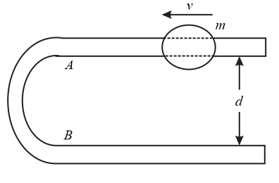
Man of mass pushes the other man of mass due to which man starts moving with acceleration . Calculate the acceleration of man at that instant.
